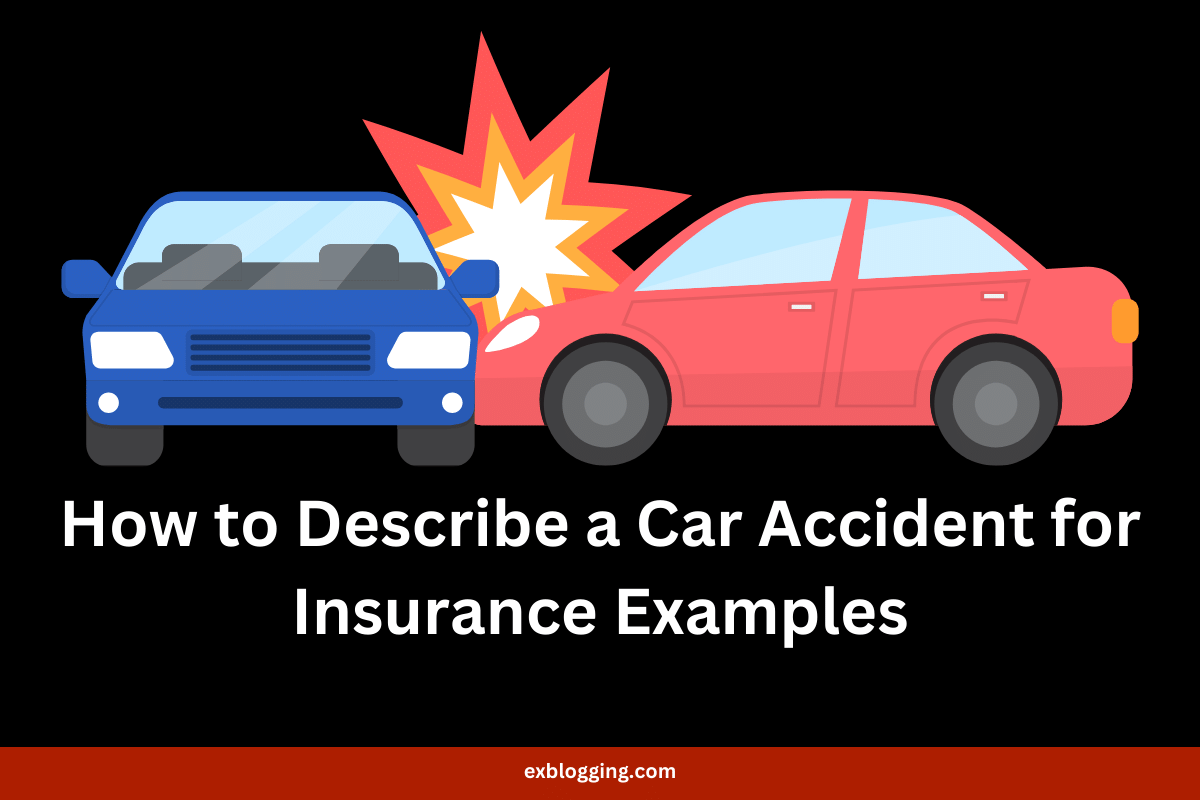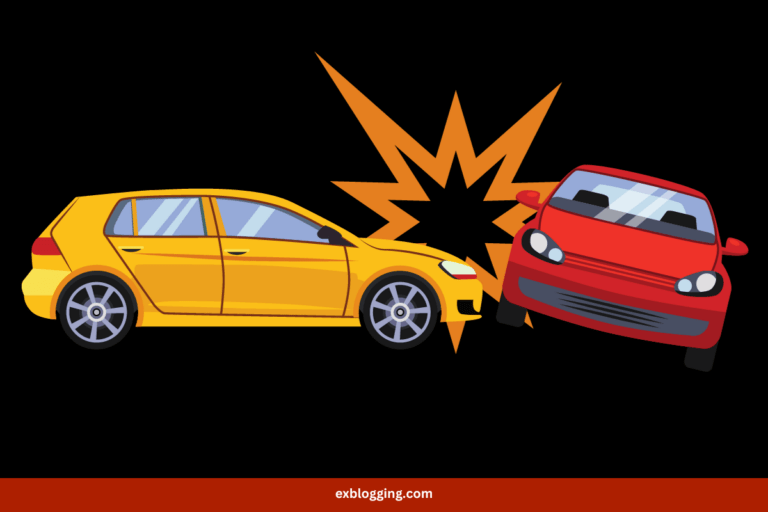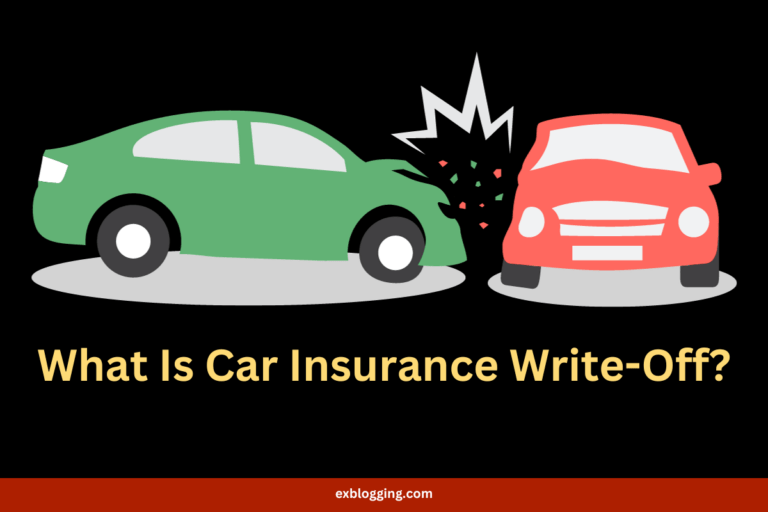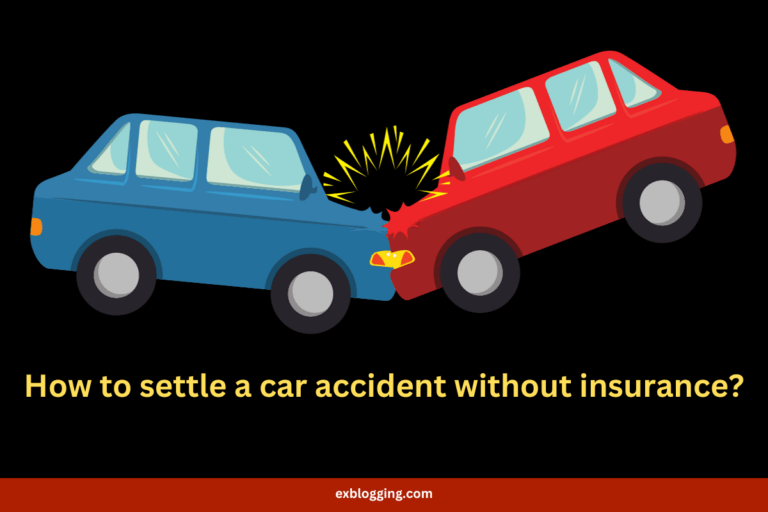How to Describe a Car Accident for Insurance Examples
Experiencing a car crash is always unexpected, and knowing how to handle it can be challenging. To be better prepared, it’s essential to have a basic understanding of what steps to take immediately after the incident. It’s crucial to report the accident to your insurance company promptly. Knowing what to say and what not to say when talking to your insurance company is important. Learn the dos and don’ts for communicating with your insurer after a car accident, as illustrated in these “How to Describe a Car Accident for Insurance Examples.”
ENSURE ACCURATE DETAILS
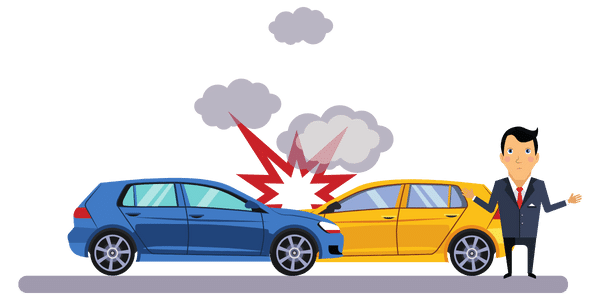
When it comes to a post-crash scenario, recalling the specific details may pose a challenge due to the rapid unfolding of events. To effectively communicate with your insurance company, you must furnish essential facts about what transpired before, during, and after the accident.
Details of the Scene: Precisely identifying the crash location holds paramount importance, offering insights into the dynamics of the incident. Provide relevant details such as nearby intersections, businesses, or distinctive markers, depending on the setting. Additionally, highlight the time, weather conditions, and the state of the road, as these elements play a crucial role. The time of the crash aids in establishing traffic patterns, while weather and road conditions can influence driver behavior. Don’t forget to report any ongoing construction near the crash site.
Vehicle Particulars: Information about the involved vehicles serves as pivotal evidence. Furnish the insurance company with details like the make and model, location of damage, VIN (Vehicle Identification Number), and vehicle registration specifics. If you notice any pre-existing damage on the other vehicle, ensure that you bring it to the insurance company’s attention.
Occupants’ Personal Data: Collect personal information from all occupants involved. For the other driver, share their name, address, and insurance details. While your insurer may reach out to passengers in your vehicle later for additional insights, it’s important to note that passengers aren’t typically considered credible witnesses in determining liability.
To fortify your case, compile the names and contact information of witnesses who stopped at the scene after the crash. Third-party witness statements can provide robust evidence for reconstructing the accident and establishing responsibility.
UTILIZE VISUAL AID
In the aftermath of a car accident, employing visuals can significantly contribute to the investigation process. If you, or someone present at the scene, can capture pictures, it’s highly advisable to do so promptly. Taking photos immediately after the crash ensures an accurate representation of how the vehicles ended up.
While the initial instinct may be to move the cars for safety reasons, try to capture at least one or two photos of the immediate aftermath. These images depicting the final positions of the vehicles play a crucial role in conveying the mechanics of the accident to insurance investigators.
If immediate photography isn’t possible, revisit the scene later to capture images of debris, skid marks, and any other indicators of the crash. These visuals, combined with photos of the vehicles, serve as valuable tools when explaining the details of the accident to the insurance representative during your statement.
Injury Reporting: A Crucial Step for Insurance Claims
An essential aspect of an insurance statement concerns the injuries suffered by any party involved in the accident. It will be indicated whether anyone was transported from the scene to the hospital, including yourself. Although going directly to the hospital after an accident is not mandatory, a comprehensive medical checkup is recommended, regardless of whether you feel it is necessary.
The effects of adrenaline, a potent chemical, may mask pain and body damage until hours after the accident. Once the body begins to feel these effects, close attention should be paid to signs indicating that there may be more severe injuries than initially thought. Some underlying injuries could be significantly detrimental and pose a danger to your health.
Unveiling the Consequences of Head Injuries
In the initial stages, a Traumatic Brain Injury might not show much, especially if there are no external signs of a head injury. Nevertheless, the skull might have been impacted by the brain, resulting in swelling, bruising, or even bleeding. Signs indicating your brain is in distress include:
- Gradually intensifying headaches
- Dizziness
- Nausea or vomiting
- Blurred vision or persistent ringing in the ears
- Memory lapses
Should a brain injury go undetected for an extended period, the effects may become permanent, escalating to a catastrophic level.
Guardian of Messages: “Understanding the Consequences of Spinal Cord Injuries”
The ultra-sensitive cord, responsible for transmitting messages between your brain and body, finds protection in the spinal column. Even a minor injury can lead to weakness, numbness, and difficulty with movement. The more severe the damage, the more likely you are to experience permanent paralysis from the point of spinal cord injury downward. This underscores the critical role the spinal column plays in safeguarding this vital communication pathway.
Empower Your Insurance Statement: Essential Tips to Safeguard Your Case and Future Well-being!
When providing a statement to your insurance company, certain precautions should be taken. If you are uncertain about a detail, avoid guessing, even if prompted by the representative. When you don’t have an answer to a question, inform them. Once an answer is given, it becomes part of the record and may have repercussions later on.
The same caution applies to injuries; refrain from stating that you feel fine or have only minor injuries, as this could impact your injury case in the future. Above all, never confess guilt or fault for the accident. If there’s a possibility that your actions contributed to the crash, consult an attorney before providing any statement to the insurance company. Avoid apologies or statements that could lead the insurer to infer your responsibility for the accident.
Frequently Asked Questions
What’s the easiest way to explain an accident?
An undesirable or unfortunate occurrence that is unintentional and usually results in harm, injury, damage, or loss is experienced; it involves casualties or mishaps, as seen in automobile accidents.
How is an insurance claim description written?
To compose a successful insurance claim letter, begin with an introduction that includes information about yourself, the reason for writing, your contact details, and the specifics of your property. By providing these details, the insurance adjuster can easily grasp the key information and can contact you if there are any questions.
Explore More: Discover related Topics for Further Insights and Guidance:
When is a Car a Write Off Insurance?
What if car insurance doesn’t pay enough?
How to Settle a Car Accident Without Insurance?
What happens if you wreck a financed car without insurance?
